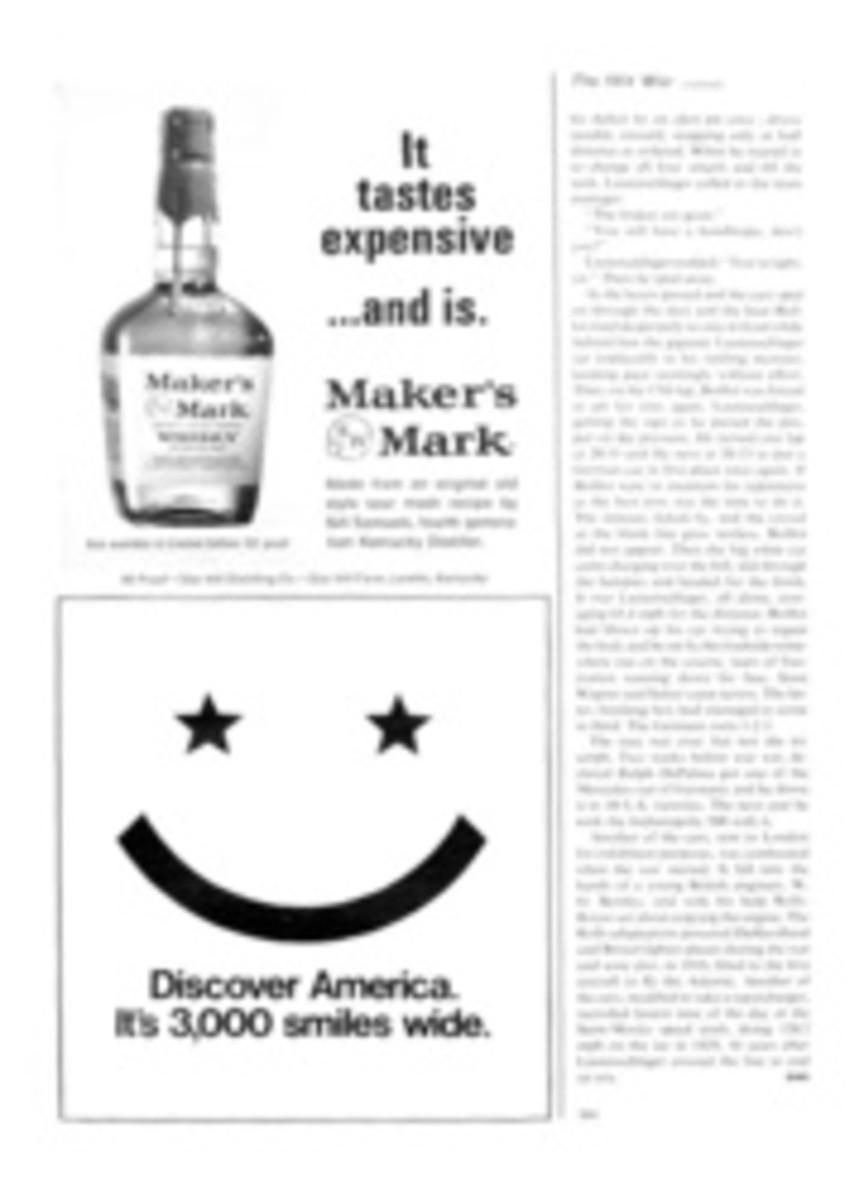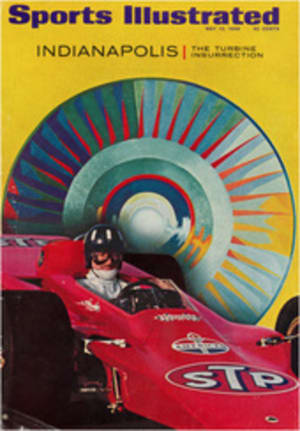
A FAST PITCH FOR A FASTER GAME
Now that more people are backing Eddie Stanky's proposal that managers be allowed to use pinch hitters twice in one game, I guess that my ideas for changing baseball don't sound as far out as they did when I was discussing them not long ago with my friend Jack Harrigan. Harrigan and I were having a drink at Russell's in Detroit and, carried away by the spirit of the occasion, I divulged my heretofore unmentioned, surefire ideas for returning baseball to its No. 1 spot. Since Harrigan has them, they will soon be all over town, so I might as well put them in writing.
But first, a little about myself. I am the discoverer of 12-inning football. If you live more than 40 miles from Detroit, chances are you have not heard of me or of inning football. Fact is, if you live in the heart of Detroit, you haven't heard of either.
Briefly, the notion is that football should abandon its arbitrary, artificial time limit and replace it with a natural time limit of 12 innings. The argument is that football is played by innings and that the mechanical time limit is nothing but a detrimental appendage. While the clock is reputed to add excitement to a game, the truth is that it stifles the excitement just when the game is getting good.
Anyway, in 1963 I persuaded Fritz Crisler and Bump Elliott—athletic director and head coach, respectively—to have the University of Michigan football team play an intrasquad game of 12-inning football. It was televised locally, and it came off perfectly. Mechanically, that is. Its emotional value remained moot, but you hardly expect a 25-0 shellacking of the scrubs by the varsity—in May—to stir much excitement.
Following that game there was a groundswell of apathy. Only Crisler showed interest, and he was ecstatic. He said, "Congratulations, Wilson. You have discovered a cure for which there is no disease." Thus 12-inning football joined Prohibition, Esperanto and other great ideas that never caught on.
O.K., so what's with this football stuff when the beginning is about baseball? Well, it was inning football that brought the subject up that day with Harrigan. The small talk had wandered onto inning football—as it always does; I am compulsive—when Harrigan said, "To hell with changing football. It's great the way it is. If you want to do something constructive why don't you think of a way to help baseball?"
I ad-libbed something like, "Oh?" as the cocktail waitress hovered in view.
"Baseball games are too damned long. Who wants to sit for 3½ hours!"
"Anybody who buys a ticket to a doubleheader must be prepared to sit longer than that," I answered smugly.
"O.K., I phrased it wrong. Baseball games are too slow."
"You're getting close. But that's not precisely the problem," I went on, primarily to point out that in order to improve any product—whether it's an automobile, a brassiere or a sports event—you first have to find a flaw and then define it in order to correct it.
Before the rise of pro football and the increased interest in hockey and basketball, sports fans used to enjoy "a day at the old ball game." The pace of the game was its charm. Fans were content to watch the players perform throughout the nine innings. Perhaps they were better students of the game than we are today. In any case, that kind of fan is rapidly becoming outnumbered by the excitement seekers who like to sit on the edge of their seats and chew their fingernails throughout a sports event.
Harrigan said, "I get it. You think they should leave the game alone and change the fans"
"Nope. I think a precise definition of baseball's problem is that it doesn't mount any extraordinary tension until the ninth inning and only then if the score is fairly close."
He conceded the point. "I don't care how short or how long a game is as long as it's a good game."
"Exactly. Neither the length of the game nor the pace of the game is important if the spectator's interest is gained early and sustained throughout. Furthermore, no matter what kind of game you're talking about, you know that a large number of spectators depart if the score is lopsided. Merely watching the players perform is not enough to hold their interest. These people like the tension of a close score."
"O.K., so the problem is to make baseball games exciting in the early innings and keep the score close," Harrigan said.
"Correct. They could keep all the rules and traditions intact except for one simple but drastic change—just divide their game into three three-inning sets instead of one nine-inning event. Winner of the game, of course, would be the winner of two out of the three sets."
"Hmmmm. Not bad. If the same team wins the first two sets the game only goes six innings."
"Right, or a cumulative total of five innings if the first two are 2½ innings each. You wouldn't play out the bottom of the third or sixth if the home team was ahead."
"That would eliminate the laughing games. You could score 15 runs in the first inning and still lose the game if you lost the last two sets," Harrigan pointed out.
"Yeah. There would be a crisis every three innings. Like three games for the price of one."
"Wilson, I like it. It'll never sell, but I like it."
"Really? Well, it's small potatoes' compared to match play." I caught him off guard.
"Match play? How'd we get on golf?"
"Not golf. Baseball."
"Waitress!"
"The three-set system is merely a partial concession to the white-knuckle group," I said. "It puts a crisis into every third inning. Now if baseball really wanted to go whole hog, it would be simple to make every inning critical by simply switching to match play!"
"I get it. An inning of baseball is the same as a hole in match-play golf."
"Right. Play nine innings, or less—winning team is the one that wins the most out of nine innings. Total runs scored don't mean a thing."
"What if a team has a three-inning lead at the end of the seventh?"
"It wins, 3 and 2, like a three-hole lead with only two holes to play in golf."
"Man! That would really change the game," Harrigan said.
"An inning would end the instant the home team scored one more run than its opponent did in the first half of the inning," I said.
"Well, one thing is sure. It would shorten the games. You could have some five-inning games if one team was to win the first five innings."
"Sure, Jack. But remember that every game would be close right to the end because it would end as soon as victory became impossible for one team."
"Both ideas sound logical all right. Tell you what I'll do, Lee. I plan to buy the American League next week and I'll have my teams experiment with them. But it's going to take a year or so to change over. Haven't you got a stopgap measure we can use in the meantime?"
"I was afraid you'd never ask. Of course I do, Jack. I've got a third idea that will lop off anywhere from half an inning to maybe two or three innings from about 99% of your games. And this one should appeal to people who think that long games are the problem. The thing baseball could do right away is very, very simple. Just allow the team with the lead to option out its turn at bat any time it chooses to do so."
While Harrigan sipped his martini and mulled that one over, I went to the cigarette machine. When I got back he said, "A team runs up a six-run lead and then refuses to bat anymore unless its opponent comes up with a big rally, right?"
"Right. At the end of nine innings it can exercise its option to take any turns at bat that it skipped previously if the other team has tied it up or gone ahead."
"Very interesting," Harrigan said. "It does bug me to watch a team with a 10-run lead batting in the eighth inning. Trying to get some 'insurance' runs."
"There you are. Optioning out innings would shorten the lopsided games. You know, Jack, I wish I had some statistics to show how often a three-run lead at the end of six innings holds up."
"Hell," Harrigan exclaimed, "teams with leads could option out their last three innings and still win—and cut about half an hour off the playing time."
"That would be O.K. with me, but I imagine the real baseball nuts wouldn't go for it. They want to see nine innings even if the score is 25-0."
"Don't I know the type. They just like to watch baseball. Any baseball," Harrigan added.
"Sure. It's easier to watch. If you follow the ball you see all the action in baseball. If you follow the ball in football you miss half of the action—the blocking, pass patterns and stuff. Baseball players are spread out, and each one makes his great plays or his errors in full view of the spectators.
"So you don't like your own ideas for jazzing up baseball," Harrigan concluded. "That's why you've never mentioned them before."
"No, it's because people still call me crazy from inning football," I said.
"Well, you'd get farther with the baseball ideas—I like the three-set system. Forget about changing football. They've been revising football rules for more than 90 years. You have to assume the game is about perfect."
"Oh yeah? I'll bet you the price of the drink tab that I can convince you that the inventors of football made a pretty good goof when they got around to formalizing the rules."
"I know, Lee. The clock."
"No. The field," I said.
"The field! Oh, for cripes sake—what's wrong with the field?"
"It's just numbered backward, that's all. There's no logic for putting the 50-yard line in the middle of the field. Midfield should be the zero-yard line. The goal lines should be the 50-yard lines."
"What's the difference?"
"Look. Football is play war. Midfield is the border between two warring countries. Your team is your army. At mid-field it advances from its own territory into enemy territory. Its objective is the enemy capital—his end zone. It's 50 miles—beg pardon, 50 yards—from the border."
"I can hear the mortar fire now."
"No, actually, Jack, if you take the ball 31 yards into enemy territory you now have it on the 19-yard line. That's silly. If you take it in 31 yards you should be on the 31-yard line."
"I suppose so. One thing—it would make it a lot easier to compute the distance of a punt or a run that crosses midfield. You'd just add two numbers—the yard line where it started and the yard line where it ended."
"You're so right, Jack. And think of the working press. They would just use a plus sign to identify the defensive team's territory and a minus sign to identify the offensive team's territory. Like— 'Jones caught the punt at —17 and ran it to +23.' And, as you say, 17 plus 23 makes 40—a 40-yard punt return."
"Sure. The midfield stripe would be like zero on a thermometer. And there's an advantage you haven't mentioned."
"What's that, Jack?"
"The ticket managers would love it."
"I don't get it."
"Everybody wants seats on the 50-yard line. There would be two of them!"
"By golly, you're right! Who buys the drinks?"
"I do. Call the waitress."
"Jack, you're all heart."
"Tell me something, Wilson. If you're so smart, why aren't you rich?"
ILLUSTRATION
ILLUSTRATION
MICHAEL RAMUS

